Hyundai Genesis Coupe 2.0T Vs Honda Civic Si Coupe: Track Comparison

If you’re shopping for a sports coupe in the low $20,000 price range that offers the best combination of fuel efficiency and style for the street, along with grin-inducing performance capabilities around a race track, chances are you’re well aware of Honda’s front-wheel drive Civic Si and its high rpm screamer of an engine. At just $21,905 it’s a heck of a value, but you also need to consider Hyundai’s $22,000 Genesis Coupe 2.0T ($23,250 with 5-speed automatic transmission), a rear-wheel drive machine with sexy styling and a taut well-balanced chassis.
Get the Flash Player to see this player.
FAST FACTS
| 1. The Honda Civic Si has a power/weight ratio of 14.72 lbs/hp, giving it a slight advantage over the Hyundai Genesis Coupe 2.0T’s ratio of 15.85 lbs/hp. |
| 2. Both vehicles have virtually identical fuel economy figures (21/29 city/hwy for the Civic and 20/30 for the Genesis). |
| 3. Both vehicles are equipped with all-season tires, the Civic with 215/45R17 Michelins and the Genesis with 225/45VR18 front and 245/45VR18 rear Bridgestones. |
Of course how things look on paper is rarely how they play out in the real world, so to put all this theorizing to the test we headed to our local 1.4-mile 9-turn test track on a warm and sunny afternoon. Hey, it’s a tough job, but somebody’s gotta do it!
WE HAVE A CONFESSION TO MAKE
Before getting down to the nitty gritty of the track test, a quick recap of the test vehicles is in order. Because Honda did not have a press fleet Civic Si available for testing, we borrowed a friend’s 2007 Si Coupe and outfitted it with a brand new set of factory wheels and tires supplied by Honda. Although the Si Coupe received a bit of a facelift for 2009, mechanically our ’07 tester was on spec and therefore a legitimate rival for the 2010 Genesis Coupe 2.0T press vehicle Hyundai supplied. The one fly in the ointment – and it’s a biggie – was the 5-speed automatic transmission the Hyundai tester was equipped with, a wrinkle we did not expect and were unsure of how it might impact on the test results since we’d yet to determine how cooperative the ‘sport mode’ paddle shifting would be when pushed to the limit around a race track.
DAVID PRATTE: TEST DRIVER BIO
David Pratte has been competing in Time Attack and Road Racing for a decade and has numerous regional and national championships to his name. In 2006 thru 2008 he competed in the Canadian Touring Car Championship, claiming six race victories and a number of track records in the process. David has turned thousands of laps at the race track used for this comparison test, providing him with the experience necessary to extract the full performance potential from both test vehicles.
TRACK TEST – DRIVING IMPRESSIONS
First up was the Honda Civic Si Coupe. Having driven a Honda in the Canadian Touring Car Championship for the last 3 seasons, I felt very much at home in this front-wheel drive machine. Although Honda’s normally aspirated engines are often erroneously thought of as being peaky, the 197 horsepower 2.0-liter engine in the Civic Si actually has a surprisingly broad powerband all the way to its 8000 rpm redline. The slick-shifting 6-speed manual gearbox is perfectly matched to the engine, making it easy to keep engine speeds right in the sweet spot where it makes the most power. The steering wheel is the perfect size and shape for spirited driving and the aluminum pedals are well spaced for heel and toe downshifting. Clearly this is a car engineered with high performance driving in mind.
Where the Civic fell a bit short of expectations was in the braking and handling balance departments. The brake pedal didn’t provide as firm or responsive a feel as I would have liked during heavy applications, and the handling balance was biased a little too far towards understeer. The all-season Michelins are undoubtedly a totally suitable street tire, but around our test circuit they were simply overwhelmed by the task, overheating in just a few laps to the point that understeer became virtually terminal. If you’re shopping for a Civic Si and plan on taking it to the track from time to time, pony up for the optional summer tires or simply replace the all-season rubber with an ultra high performance summer tire.
The Hyundai felt far more neutral with regards to handling balance, though some understeer was still present thanks in part to its overwhelmed all-season Bridgestones. But given its rear-wheel drive configuration, the Genesis Coupe 2.0T should have been able to neutralize the understeer with the throttle if it had enough power, but with 210 horses and 223 ft-lbs of torque there simply wasn’t enough juice on tap to induce some throttle-on oversteer. Even in the very tight hairpin leading onto the front straight, only a smidgen of wheel spin was possible. But with some trail braking (or braking while turning) the rear end would willingly follow the front, eliminating most of the speed-robbing understeer. As a result the Genesis Coupe 2.0T felt significantly quicker in the corners than the Honda did.
However, thanks to the very unsporting ‘sport mode’ automatic gear selection (via paddles on the steering wheel or the gear lever on the center tunnel), acceleration out of the corners was severely hampered. For whatever reason, the transmission simply would not downshift while the brakes were being applied (as is standard practice when approaching a corner on a race track). No matter how many times I banged on those paddles or the shift lever, I could only select a lower gear once I was back on the power and starting to acceleration out of the corner. This problem was exacerbated by the fact that the turbocharged 2.0-liter engine under the Hyundai’s hood runs out of steam at about 6000 rpm and doesn’t seem to reach full boost until about 3500 rpm, meaning the usable range of power is fairly narrow compared to the Honda.
TRACK TEST – DATA ANALYSIS
As you can see from the data acquired from the fastest lap recorded for each car during testing (using a DriftBox, a device that uses both GPS and onboard accelerometers to measure speed, lateral g-forces, longitudinal g-forces, yaw angle and much more), the Civic Si had a marked acceleration advantage over the Genesis Coupe 2.0T. You can see this quite clearly on the main graph, which plots mph and lateral g’s on the vertical axis and distance in feet on the horizontal axis. The blue line represents the Civic’s speed and the dark purple (appears black) line that follows below it is the Genesis Coupe’s speed. At the end of the main straightaway, the Honda was consistently reaching 96 to 97 mph before braking for Turn 1, whereas the Hyundai was reaching a maximum of 90 mph at the same point. This trend continued across the entire 1.4-mile distance covered during a lap of the test circuit (the shape of which you can see in the bottom right corner of the data screen), where the Civic’s blue speed line remains above the dark line representing the Genesis Coupe’s speed.
Just as we hypothesized, the opposite proved true in the corners, where the Hyundai consistently achieved higher lateral g-forces and cornering speeds. If you look closely at the troughs or valleys for vehicle speed, you’ll notice that the Genesis Coupe doesn’t have to slow quite as much as the Civic and that it’s generally able to sustain a higher speed across that trough (which represent corners), and you’ll also notice that the lateral g-force line for the Hyundai (the olive green line) reaches a higher point in both left and right turns than the Honda does (the red line).
WE HAVE A WINNER?
Breaking the test track down into three segments, the higher straightaway speed and Turn 1 cornering speed of the Civic Si allowed it to complete the first segment (between the green start/finish dot and the first blue dot on the track map) in 25.9 seconds, 0.5-seconds quicker than the Genesis 2.0T. The Hyundai then holds the gap at 0.5-seconds through the second segment, where its excellent balance and higher cornering power allowed it to stick with the front-drive Honda through Turns 4, 5 and 6. But then in the final segment the Civic extended the gap to 0.8-seconds, thanks to its stronger acceleration out of the Turn 9 hairpin and down the all-important front straightaway. In the end, the Civic Si Coupe completed its best lap in 1-minute and 20.0-seconds, while the Genesis 2.0T coupe took 1-minute and 20.8 seconds to do the same. This may seem like a miniscule time difference, but keep in mind that at 90 mph the Civic is traveling at 132 feet per second, so the gap back to the Hyundai when the Civic reaches the braking zone for Turn 1 is approximately 106 feet. In racing terms, that’s a long way back.
The question we pondered over pizza and ice tea at the end of the day was on obvious one: had the Hyundai been equipped with a 6-speed manual transmission as we originally intended for this test, would it have made a 0.8-second difference? We’ll never know for sure (unless we redo the test), but in my mind the answer is an almost certain “yes.” With shorter gearing, the 6-speed manual would have allowed me to keep the 2.0T engine operating in its most efficient rpm range, and more critically it would have allowed for proper downshifts in each braking zone so that acceleration out of each corner was done in the correct gear. This would have largely negated the acceleration advantage the Civic Si showed during the test and allowed the Hyundai to further exploit its cornering power advantage. If I had to make an educated guess at how much faster the Genesis 2.0T would have gone around our test track with a 6-speed manual gearbox, I would wager something in the neighborhood of 1.5 to 2 seconds.
We should note that while the Si is as high-performance a Civic as you’ll get from Honda, our Genesis Coupe 2.0T tester is almost the bottom of the barrel for that particular model. You can get plenty more performance from a Track model with a stiffer suspension, limited-slip differential and huge Brembo brakes, but then you’ll pay $5,000 more than the Honda. The same goes for the 306hp V6.
Regardless of lap time guesstimates and stubborn slushbox transmissions, both cars proved they are very capable track day machines, each with its own strengths and weaknesses. For some drivers the roar of the Civic Si’s engine at 8000 rpm and its well-documented build quality will win out when it comes time to sign the ownership papers, while for others the Hyundai Genesis Coupe’s classic rear-wheel drive configuration, cutting edge styling, and tuner-friendly turbocharged engine will tip the scale in its favor. Both represent a tremendous value at around $22,000 and with high performance summer tires would be much quicker and more fun around a race track or around town.
HONDA CIVIC SI:
HYUNDAI GENESIS 2.0T:
RELATED READING:
2010 Hyundai Genesis Coupe 2.0T – A Tuner’s Delight
2009 Honda Civic Si – It’s no coincidence the Civic Si is the poster boy for sport compact performers
LOVE IT
- K20Z iVTEC engine pulls strongly in every gear and makes beautiful noises
- The steering wheel, pedals and shifter are shaped and positioned perfectly, making it easy to use them in unison.
- Helical limited slip differential allows the front tires to put the power down very effectively even while cornering.
- Firm suspension and rigid chassis provide responsive handling and positive road feel
- Rear-wheel drive layout provides a balanced feel while cornering
- Firm brake pedal feel and quick braking response
LEAVE IT
- All-season tires greatly limit cornering and braking performance
- Understeer bias in the suspension tuning limits cornering ability
- Brake pedal travel too long and soft during heavy applications
- All-season tires greatly limit cornering and braking performance
- Relatively narrow powerband and not quite enough power to use rear-wheel drive to full benefit
- ‘Sport Mode’ automatic shifting will not downshift while braking

Some say he's closely related to Bigfoot and that he's a former Canadian Touring Car Champion. All we know is he's the AutoGuide Stig! A thesis defense away from being your intellectual superior he's a professor of vehicle handling dynamics. The part-time touring car and time attack racer is faster (much faster) than your average auto journalist.
More by Dave Pratte

















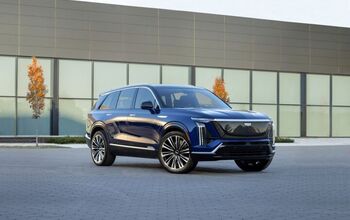
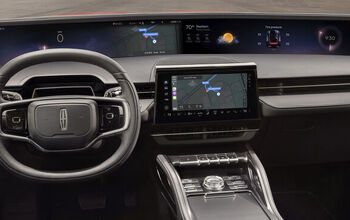
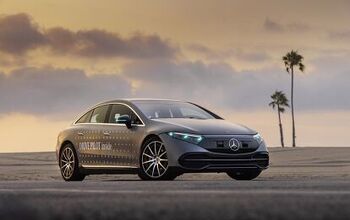
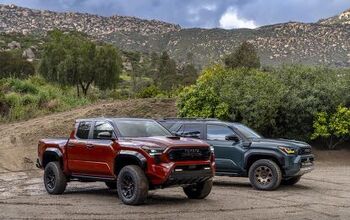
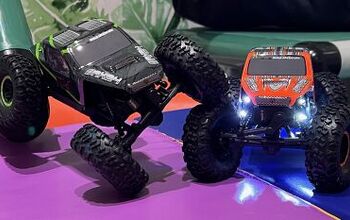
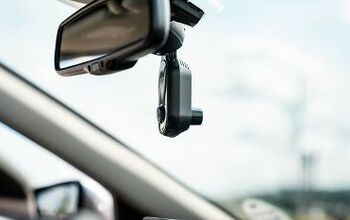

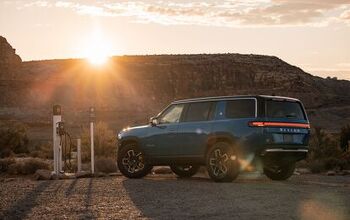




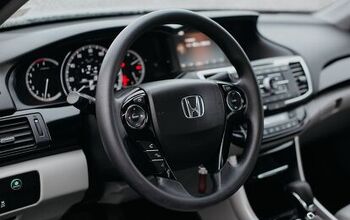

Comments
Join the conversation